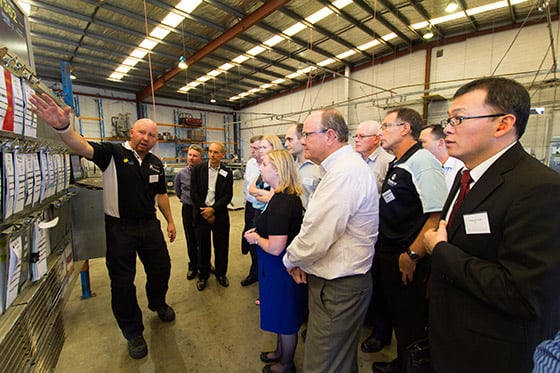Lean management is a leadership
approach that supports continuous improvement through collaborative problem
solving. Rather than leading from the top down, Lean managers strive to
actively engage their teams in the improvement process in order to promote
personal and organizational success.
The basic components of Lean management are:
The basic components of Lean management are:
- Standard
work (SW). Tasks are broken into a
series of steps that are followed by all team members at all times.
Standard work is continuously adjusted to decrease waste and add value
until a state of perfection is reached.
- Visual
controls. Team members have an
opportunity to track their own performance in real time and make
adjustments.
- Daily
accountability process. The
group comes together to review progress, refine processes and chart next
steps.
Daily
accountability throughout the organization, especially at the leadership
levels, is the key to sustained transformation. Here are four reasons why
accountability is so important to Lean management.
Accountability
Builds Trust
Perhaps
the most important result of accountability is trust, which is essential in any
relationship. Being accountable to
something means that you’re willing to make commitments and be responsible for
your own actions. This promotes trust between you and the people around you.
When you allow yourself to be accountable to this trust, you’re effectively
telling people that you’re going to admit it and make amends when the trust is
broken. In effect, you’re emphasizing
how important and committed you are to the strategy.
Accountability
Improves Performance
Accountability
eliminates the time and effort you spend on distracting activities and other unproductive
behavior. Research shows that some people have the tendency to engage in
ineffective behavior. Without accountability, you may only catch these
behaviors when mistakes and errors have already been made and your organization
has already suffered the loss. By building a culture of accountability on the
onset, you rid your organization of ineffective behavior, put the right people
on the right jobs, and send the message that you’re serious about excellent
work.
Accountability
Promotes Ownership
When
you make people accountable for their actions, you’re effectively teaching them
to value their work. Through positive
feedback and corrective actions, they learn that their behavior and actions
have an impact on the team. They’re not just floating members without clear
roles to play – they’re important to your organization. When people know that
they’re valued and important, they’re more driven to work hard. They learn to
have a sense of ownership in what they do.
Accountability
Inspires Confidence
When
done right, accountability can increase your team members’ skills and
confidence. Don’t mistake accountability for controlling behavior. The key is
to provide the right support – give constructive feedback, improve on your
members’ suggestions, give them freedom to decide, and challenge them to think
of better solutions as a team. When
people know that you’re actually listening and concerned about their
performance, they’re more likely to step up and do their best.
Given
these reasons, it’s important that you build a culture of accountability from
the start. Remember that accountability
is building a culture of trust and not fear.
Your goal is not to punish and look for errors and mistakes. Instead,
you seek to open up multiple feedback mechanisms, fill in gaps, improve on
solutions, reward productive behavior, and remove unproductive ones. As a
leader, you yourself should hold yourself to the highest level of
accountability.




.jpg)

